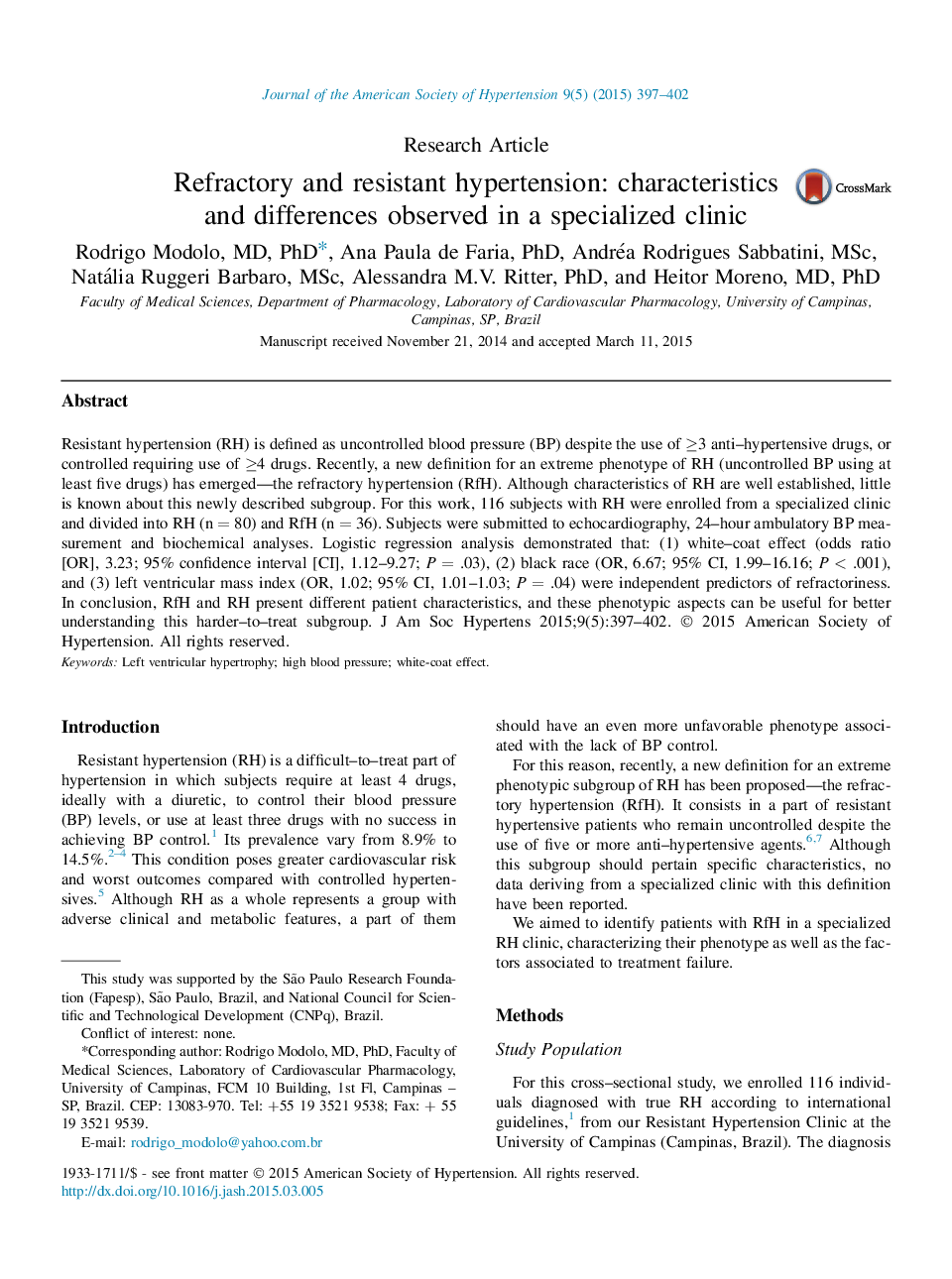| Article ID | Journal | Published Year | Pages | File Type |
|---|---|---|---|---|
| 5983640 | Journal of the American Society of Hypertension | 2015 | 6 Pages |
â¢We assessed a cohort of RHTN patients for differences in resistant and refractoryâ¢Resistant and refractory hypertensives present notable phenotypical differencesâ¢The white-coat effect prevails in refractory hypertensionâ¢Left ventricular hypertrophy and black race are strongly linked to refractory HTN
Resistant hypertension (RH) is defined as uncontrolled blood pressure (BP) despite the use of â¥3 anti-hypertensive drugs, or controlled requiring use of â¥4 drugs. Recently, a new definition for an extreme phenotype of RH (uncontrolled BP using at least five drugs) has emerged-the refractory hypertension (RfH). Although characteristics of RH are well established, little is known about this newly described subgroup. For this work, 116 subjects with RH were enrolled from a specialized clinic and divided into RH (n = 80) and RfH (n = 36). Subjects were submitted to echocardiography, 24-hour ambulatory BP measurement and biochemical analyses. Logistic regression analysis demonstrated that: (1) white-coat effect (odds ratio [OR], 3.23; 95% confidence interval [CI], 1.12-9.27; P = .03), (2) black race (OR, 6.67; 95% CI, 1.99-16.16; P < .001), and (3) left ventricular mass index (OR, 1.02; 95% CI, 1.01-1.03; P = .04) were independent predictors of refractoriness. In conclusion, RfH and RH present different patient characteristics, and these phenotypic aspects can be useful for better understanding this harder-to-treat subgroup.
